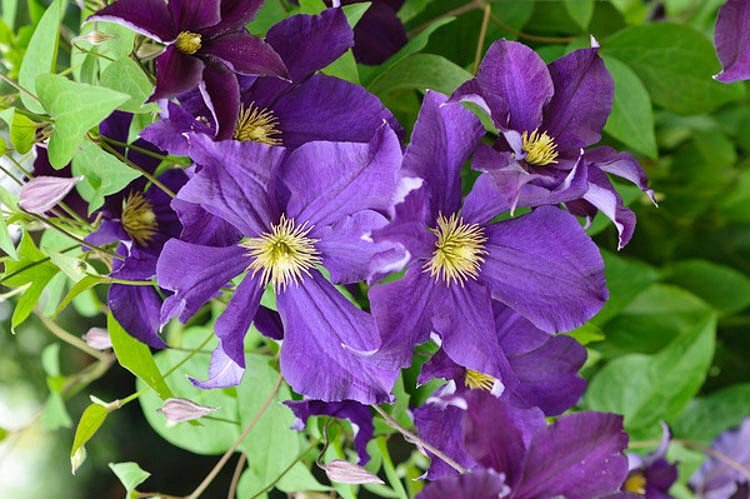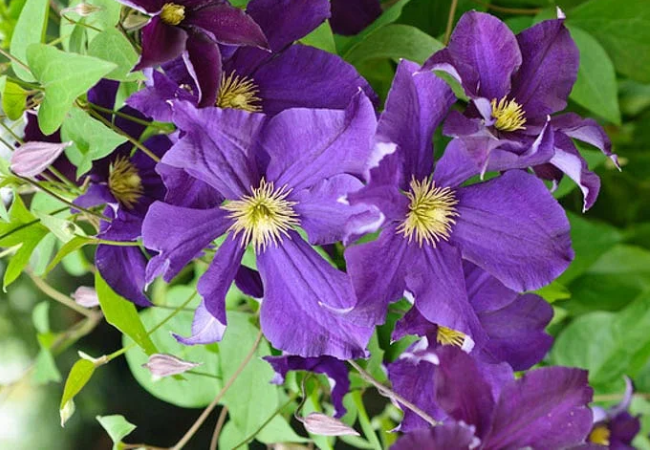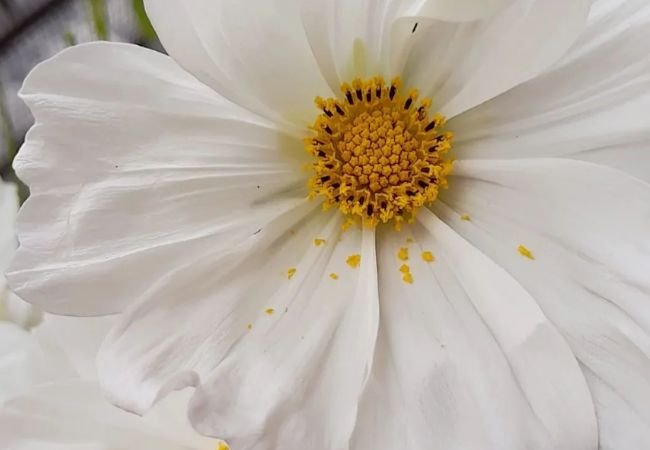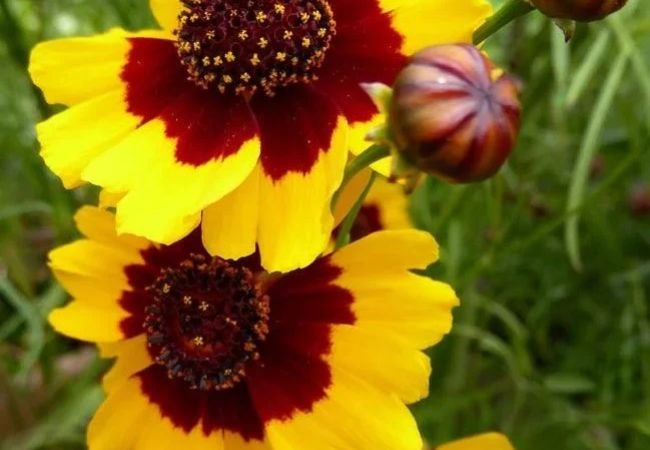Learn how to grow and care for leather flowers (Clematis) with this easy guide. Get planting tips, care advice, and design ideas for your USA garden!
Hey there, garden lovers! I’m Ashley Scott, and I’ve been digging into gardening for over 10 years now. Welcome to my little corner of the internet, USA Garden Hub, where I share all the tips and tricks I’ve picked up along the way. Today, I’m super excited to talk about one of my absolute favorites: the leather flower, also known as Clematis. Whether you’re a seasoned gardener or just starting out, this guide will answer all your questions about growing and caring for this stunning plant right here in the USA. Let’s get started!
What is a Leather Flower?

So, what exactly is a leather flower? Well, it’s the common name for Clematis, a gorgeous genus of flowering vines and shrubs that belong to the buttercup family, Ranunculaceae. The name “leather flower” comes from the thick, leathery sepals that protect its delicate petals. These plants are famous for their eye-catching blooms, which can range from deep purples and reds to soft whites and pinks.
I’ll never forget the first time I saw a leather flower vine climbing over a rusty old fence in a friend’s Oregon backyard. The way those vibrant flowers swayed in the wind hooked me instantly. Since then, I’ve been growing all sorts of leather flower clematis varieties in my own garden, and I can’t wait to tell you more about them.
For a deeper dive into its botanical roots, check out this resource from Clemson University.
Popular Varieties of Leather Flower
There are tons of leather flower varieties out there—over 300, actually! Here are some of my go-to picks that I’ve grown over the years:
- Clematis ‘Jackmanii’: This one’s a showstopper with its big, velvety purple flowers. It’s super popular and easy to find.
- Clematis ‘Nelly Moser’: Soft pink petals with bold red centers—perfect for a romantic vibe.
- Clematis ‘Henryi’: Pure white blooms that scream elegance.
- Clematis ‘Ville de Lyon’: Bright red flowers that add a pop of color anywhere.
There are also unique ones like the scarlet leather flower (Clematis texensis) or the swamp leather flower (Clematis crispa), which thrive in specific conditions. Want to explore more varieties? I’ve got a handy guide on choosing the best vines for your garden over at my site.
Picking the right one depends on your space and style. Got a tiny patio? Go for a compact variety like Clematis ‘Piilu’. Love bold colors? Try the purple leather flower varieties. The options are endless!
How to Grow a Leather Flower
Growing a leather flower isn’t rocket science, but it does need a little TLC to shine. Here’s what I’ve learned works best.
Ideal Growing Conditions
- Soil: These plants love well-draining, fertile soil that’s neutral to slightly alkaline. I mix in some compost or aged manure to give them a nutrient kick.
- Light: Leather flowers crave sun—about six hours a day—but their roots like to stay cool. I shade the base with mulch or low plants like hostas.
- Water: Keep the soil moist but not soggy. I water mine deeply once a week, more if it’s scorching out.
Step-by-Step Planting Guide
- Timing: Plant in early spring or fall when it’s cool outside.
- Prep: Dig a hole twice as wide as the root ball and toss in some compost.
- Plant: Set the crown about 2 inches below the soil surface—it helps the roots grow strong.
- Support: Add a trellis or fence for your leather flower vine to climb. I use a wooden obelisk for a classy touch.
- Water: Soak it well after planting and keep it moist while it settles in.
Need leather flower seeds? You can start them indoors, but I usually buy young plants for quicker blooms. Check out Purdue University’s guide for more planting tips.
Caring for Your Leather Flower
Once your leather flower is in the ground, a little care goes a long way.
Watering and Feeding
- Watering: Keep the soil consistently moist, especially in summer. I use a soaker hose to avoid wetting the leaves.
- Feeding: Hit it with a balanced fertilizer in spring and mid-summer. I also sprinkle compost around the base for extra goodness.
Pruning Made Simple
Pruning can feel overwhelming, but it’s key for healthy growth. Leather flowers fall into three groups:
- Group 1: Early bloomers (like Fremont’s leather flower). Trim lightly after they flower.
- Group 2: Big hybrids (think ‘Nelly Moser’). Prune in late winter, just shaping and removing dead bits.
- Group 3: Late bloomers (like ‘Jackmanii’). Cut back hard to 12 inches in late winter.
I always double-check the pruning group for each plant—saves a lot of guesswork!
Pests and Problems
Leather flowers are pretty tough, but watch out for Clematis wilt—a pesky fungus that makes stems droop. My trick? Good spacing, dry leaves, and quick removal of any sick parts. For more on plant health, see Cornell University’s advice.
Using Leather Flower in Your Garden
The versatility of leather flowers is what makes them so fun. Here’s how I use them:
Design Ideas
- Climbing Beauty: Train them up arbors or pergolas for a vertical wow factor.
- Pairings: They look amazing with roses or shrubs like hydrangeas. I’ve got a combo going with my favorite perennials.
- Ground Cover: Low-growers can blanket bare spots with color.
Leather Flower Bouquets
These blooms are perfect for cutting! I snip a few stems of leather flower clematis like ‘Princess Diana’ for indoor arrangements. They last ages in a vase and add a handmade vibe—almost like a leather flower pattern you’d craft yourself.
Common Questions About Leather Flowers
Got questions? I’ve got answers based on my decade of experience.
Why Isn’t My Leather Flower Blooming?
If your plant’s not flowering, check sunlight (needs six hours), pruning (wrong cuts can kill buds), or age (young plants take time). Give it a boost with fertilizer and patience.
Can I Grow Leather Flowers in Pots?
Yes! Use a big pot with drainage and a compact variety like ‘Bijou’. Mine’s thriving on my deck with regular water and food.
How Do I Protect It in Winter?
Most are hardy, but mulch the base in cold zones. For pots, move them somewhere sheltered. The University of Illinois Extension has great winter care tips.
Fun Uses Beyond the Garden
Ever thought about how to make a leather flower for crafts? While that’s more about leather crafting, the real blooms inspire me. I’ve seen folks use leather flower bouquets for weddings or even mimic their look with a leather flower keychain. The plant’s charm goes way beyond the soil!
Wrapping Up
The leather flower, or Clematis, is a gem for any USA garden. With its vibrant colors, climbing grace, and easy care, it’s no wonder I’m obsessed. Whether you’re growing a purple leather flower or a scarlet leather flower, I promise it’ll bring joy to your space. So grab some leather flower seeds or a plant, and give it a go—you won’t regret it!
For more gardening inspo, check out North Carolina State University’s Clematis page or browse my site, USA Garden Hub.







4 Comments on “Leather Flower (Clematis) Guide: How to Grow and Care for This Beautiful Plant”